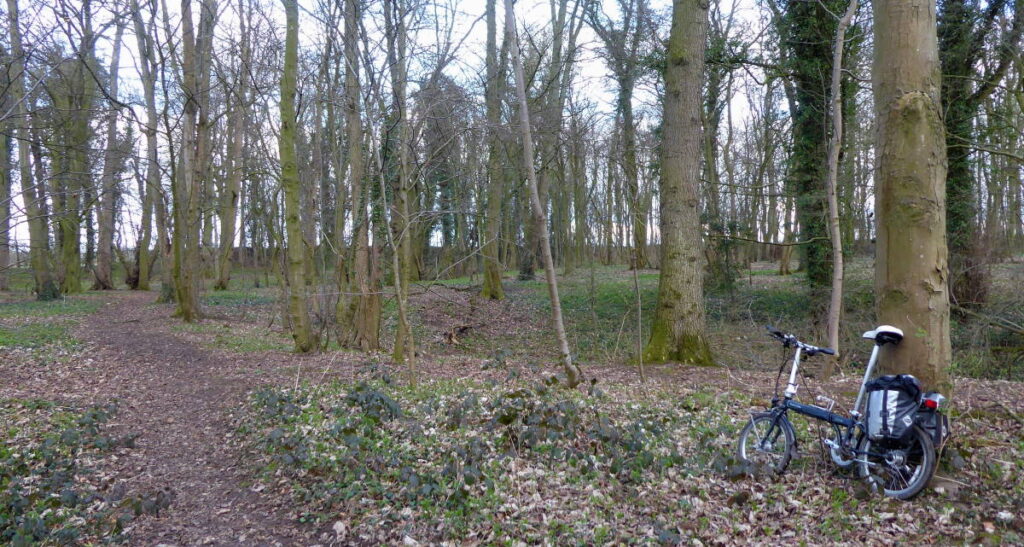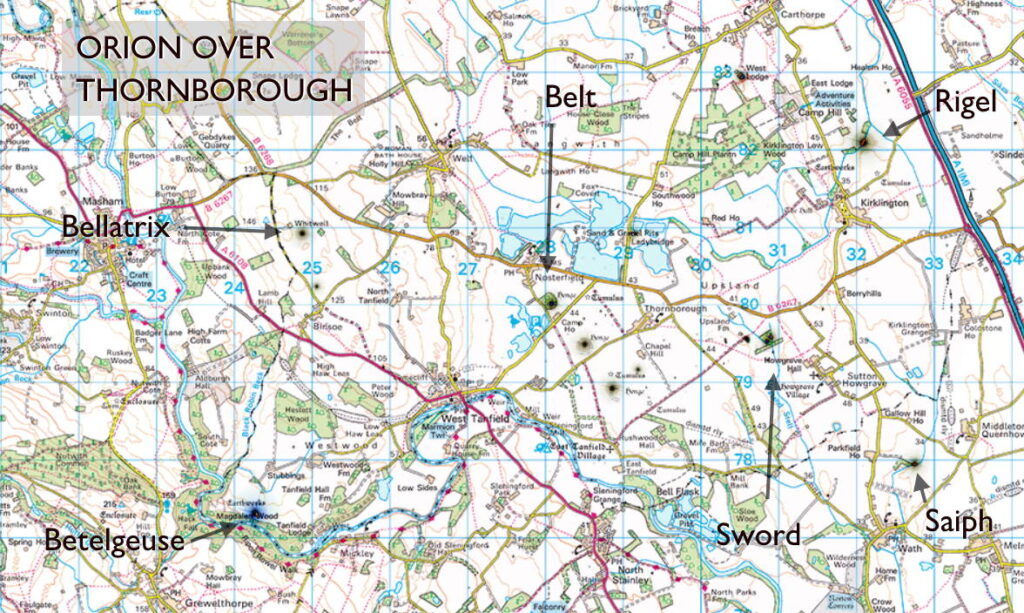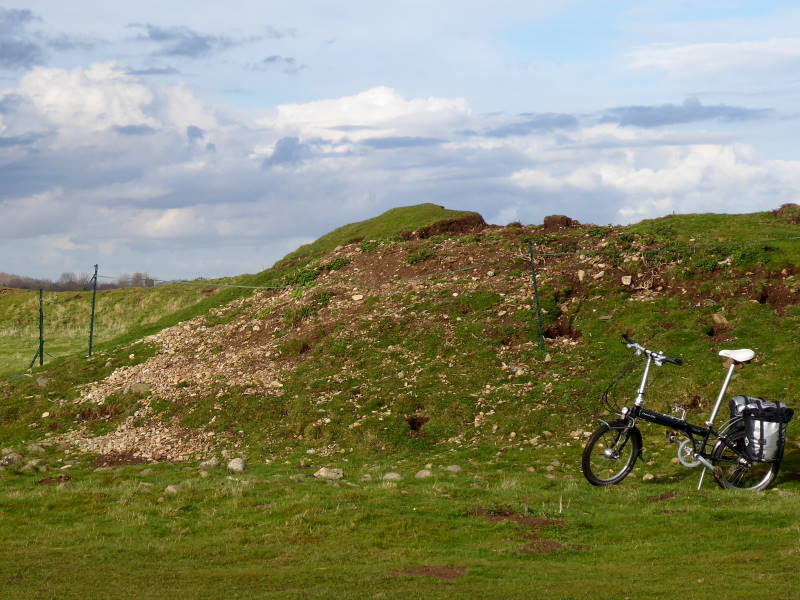In early 2023, the ‘Stonehenge of the North’ was being hyped in the media: a trio of neolithic earthworks by the village of Thornborough, east of Masham, on the flatlands between Yorkshire’s Dales and Moors. I couldn’t resist a folding-bike visit, enabled by the ongoing £2 flat bus fare scheme.

The hyping came about because of their new public access. Until now, you could only observe the low-level ridges from inside your car, and there was hardly anywhere to park anyway. But now you can wander round the three henges, though there’s still hardly anywhere to park. Ha ha ha. Not a problem with a bike. I’m not smug. I’m just pleased with myself for being superior.
That ‘Stonehenge’ tag, evidently coined by people who’ve never actually been there, isn’t helpful. Because there isn’t all that much in the way of the vertical to impress. The three henges are all low-level affairs, football-pitch sized circular banks that were once four metres high, but five thousand years later – thanks to erosion by weather, farmers, and rabbits – are a bit less dramatic. We shouldn’t underestimate their undoubted importance to local inhabitants then, though, combining roles of calendar, observatory and temple. But not, to the annoyance of locals, a cart park.

The northern henge is the most confusing, long since overgrown by trees. And the southern henge is the least impressive, with little above ground to indicate the big deal these structures must have been spiritually and astronomically. The middle henge though has enough to warrant a bike trip – enough from Masham five miles away, or certainly the bus stop at West Tanfield a mile or so hence, anyway.

I enjoyed ambling round the middle henge’s banks. It’s just possible to imagine something mystical going on five millennia ago, with elders instructing their grandchildren in the ways of the stars. The entrance and exit to the henge line up with winter solstice, and with risings of the constellation Orion.

Indeed, the slightly dog-legged layout of the three henges suggests to some that they might mimic the very recognisable shape of the three stars of Orion’s belt, when it dominates the winter night sky.

That’s a controversial theory, but it does raise the question: if the three henges represent Orion’s belt, what about the rest of the constellation – the four prominent stars appearing rectangularly-ish around it?
Well, if you project Orion on to an OS map, you can see what those wise ancients may have seen, if they’d had drones, internet access, Photoshop, and too much time on their hands. Orion’s Belt, Bellatrix, Rigel and Saiph (three of the four corner stars) don’t line up with anything notable.

But, intriguingly, Betelgeuse (yes, yes, ‘beetle juice’, I know, that one; I’d prefer to call it ‘α Orionis, red supergiant of spectral type M1-2’) sits just about perfectly on another earthwork, significantly situated on a thickly-wooded promontory above a bend in the River Ure.
Sadly, it seems that particular earthwork is ‘only’ medieval in origin (a long-gone manor house, in fact). So bang goes any Betelgeuse-related ancient-site theory.
I had over an hour to wait before my bus home from West Tanfield, from the stop just opposite the Bull Inn, and its claimed ‘best beer garden in Yorkshire’.

How to occupy the time? Perhaps that claim needed some serious investigation. I’m sure the learned ancients who constructed the Thornborough Henges would approve of such quests for wisdom.
